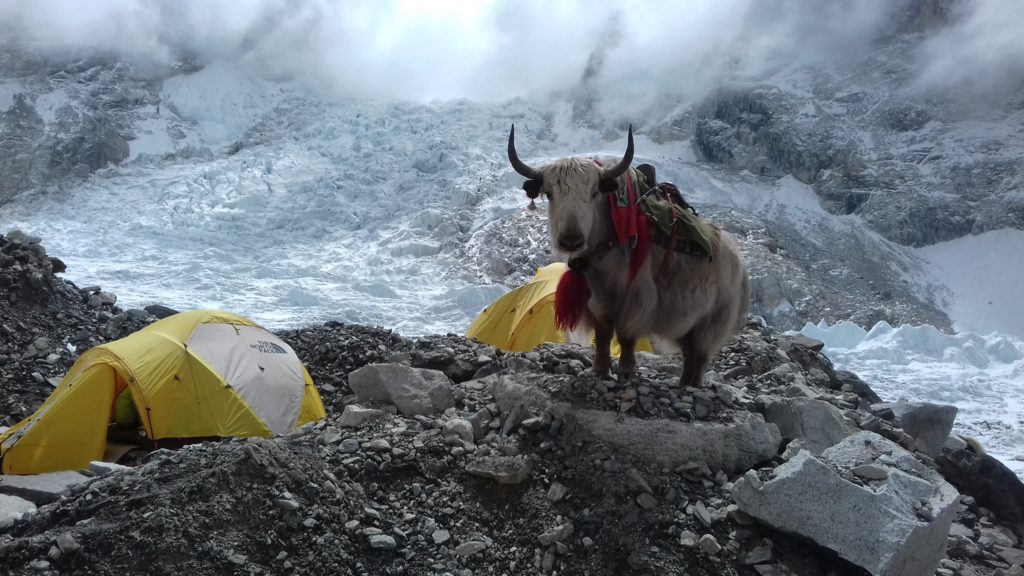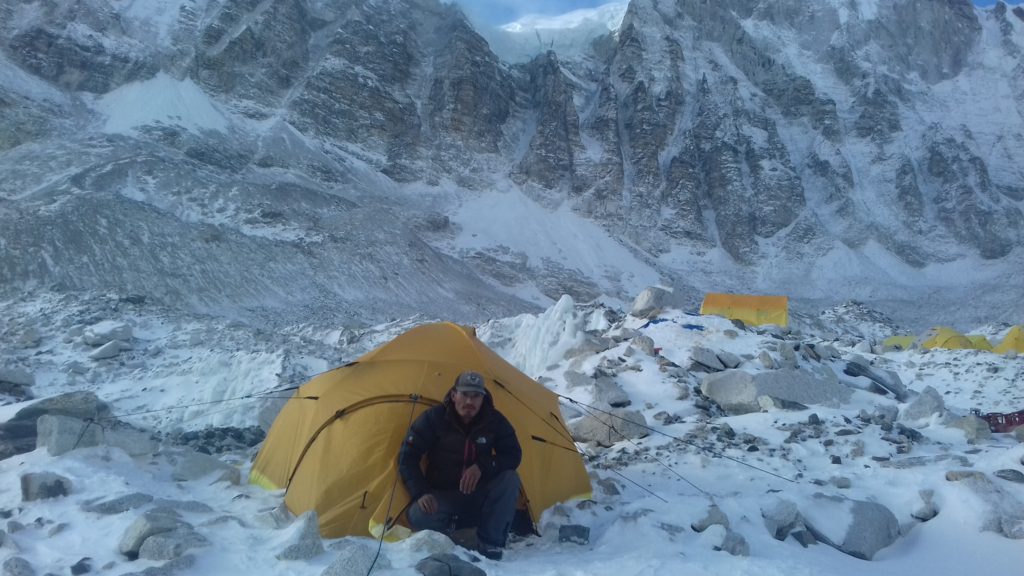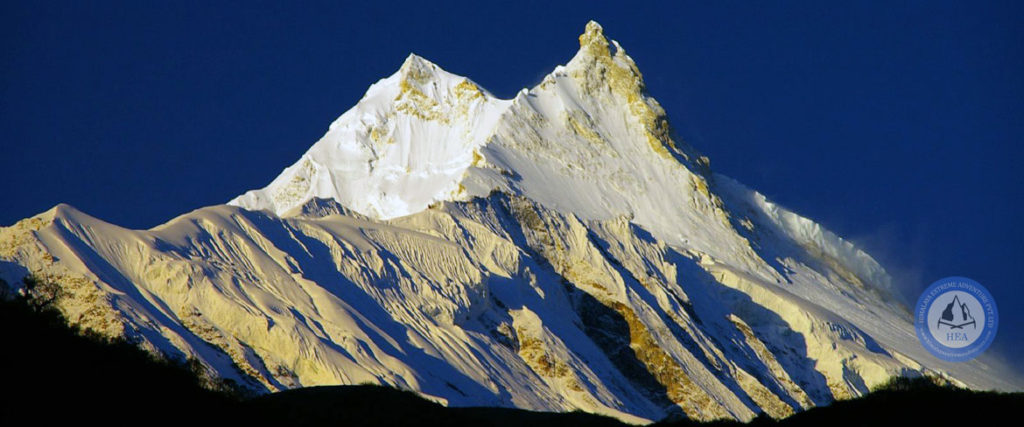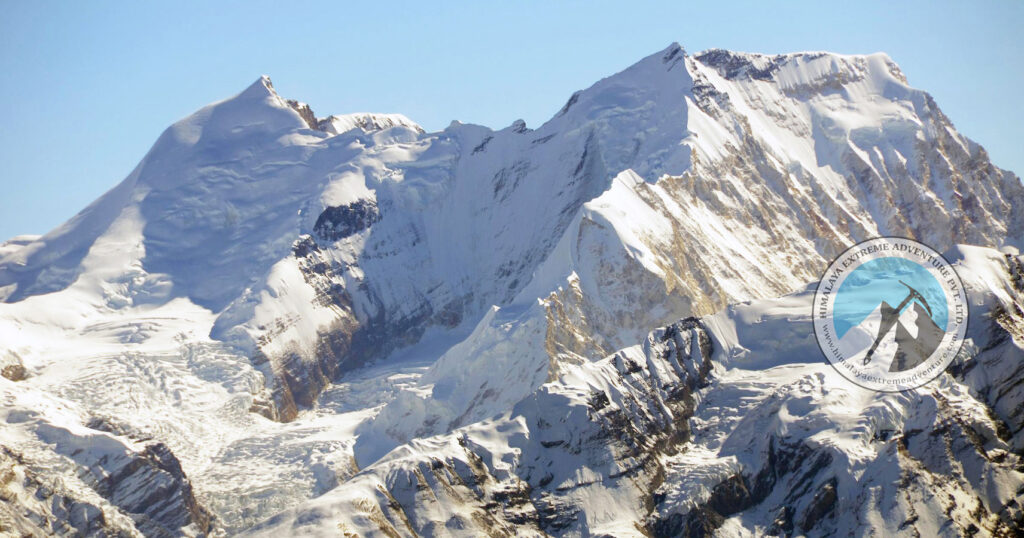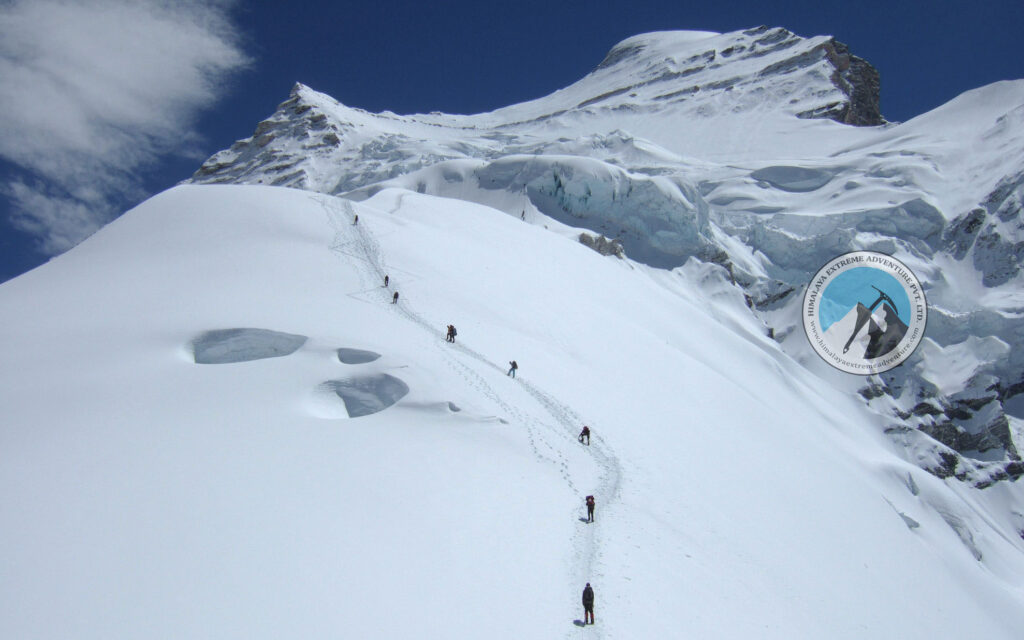“Follow Himalaya Extreme Adventure to the top of the world as we are delighted to offer the lifetime adventure with world-class service from Everest Base Camp (EBC) to all the high camps of Mt. Everest (8848.86m) from its South Face from Southeast Ridge in Nepal.”
We take care of you right from your arrival in Kathmandu. The price includes hotel accommodation, the flight to Lukla in the Khumbu region, the trek to Base camp via Namche and tea house full board service during the trek before arriving at base camp; and of course the services at base camp and the high camps. Let us take care of all the details – you can fully focus on your climb.
The climbing Guides of our company are highly qualified, skilled, regularly reviewed and re-trained and recognized for their training and experience throughout the profession. We only take the most experienced guides and staff on this expedition. This is a serious climb and mistakes can have serious consequences. This is why we focus extensively on safety and accident prevention for both clients and guides on our Everest expedition. No expedition is without risk and certainly not one to the highest Mountain in the world. However, we implement rigorous safety standards to minimize the risk. We’d also like to highlight that our guides and staff are all employed under ethical standards.
The exploration of Mount Everest has a long and varied history – from the first recognition of the peak to the attempts of Mallory, Irvine, Norton & co and eventually the successful attempt of the British and the impressive solo ascent of Reinhold Messner.
The Sagarmatha (the forehead of the sky) in Nepali is known as Mt. Everest throughout the world. With an altitude of 8848m, it is the highest peak on earth. The South face is recognized to lie in Nepal whereas the North face is in China’s autonomous state Tibet. This world’s highest peak was first officially measured in 1856 during the Great Trigonometric Survey of the British Indian government and then known as Peak XV certified with a height of 8840m. With simple technology and the distance from the mountain, the height was determined with really phenomenal accuracy – only 8m off from the current value of 8848m.
The name of the British Surveyor in 1856 was Sir George Everest- the General of British India during the survey period and a somewhat infamous character. Tibet and Nepal were closed to foreigners at the time, so it is reasonable to assume that the local names of the mountain were unknown. The name of the highest peak was chosen in his honor, although not without controversy even at the time. The first climbing attempts were not possible until the 1920s and they ended ultimately in disaster. Success came only in 1953 from the South side on the very same route you’ll be taking for this expedition.
Retrace these historic achievements and write your history by attempting to reach the top of the world. With us as your support crew, everything is possible.
APPROACHES TO ABC (ADVANCED BASE CAMP) FROM SOUTH (NEPAL):
The approach on its south side is through the Khumbu region of Nepal leading up to the Khumbu Glacier extending down to Lobuche (4940m). It starts with the flight to Lukla and the trek from Lukla to Everest South Base Camp (5364m) via Namche Bazaar (3440m)-Tengboche (3860m)-Pheriche (4371m)-Lobuche (4940m)-Gorak Shep (5164m). It takes typically 8 days to reach ABC from Kathmandu.
CLIMBING ROUTES SOUTH SIDE:
- The South route is technically a trekking route with a little objective danger once past the Khumbu icefall apart of a few crevasses and Seracs bridged by ladders, a couple of short ice cliffs around camp 3 and rock sections protected with fixed lines. There is an obvious danger of high altitude sickness complications and changeable, unpredictable mountain weather.
- The Khumbu Icefall is a steep glacier with an obvious implication of large crevasses and treacherous unstable Seracs making navigation complicated and riddled with a high objective danger of falling ice. This is the most dangerous part of the climb. At the beginning of the climbing period, climbing Sherpa set the route through the icefall installing ladders across crevasses and along vertical Seracs ice walls for efficient and easy climbing. These arrangements make the climb of the Khumbu icefall possible, efficient and relatively safe, especially early morning before the sunrise when the ice structure is well frozen. Khumbu icefall is very dangerous in the afternoon due to its western aspect.
- Camp 1 (6000m) is located on the top of Khumbu icefall; it is a desolate and exposed place mainly used as a rest and transition location on the way to camp 2 (6400m). The glacier between camps 1 and 2 flattens but there are still large crevasses close to camp 1, which are also fixed with ladders.
- Camp 2 is located in a lateral moraine at the bottom of the west ridge. It is a very safe and sheltered location with tremendous views on Lhotse. All companies set up their main climbing camp for the duration of the climbing period with tents for individual climbers, the kitchen and dining tents. Camp 2 is the main acclimatization camp and the base for camp 3-acclimatization climb and the final summit attempt.
- Camp 3 (7200m) is located on a small ledge on the Lhotse wall. One has to cross the glacier to the right side before 40 deg. 600m climb on the compact snowfield. The route is safe with a couple of short less than 3m ice cliffs, which climbing Sherpa’s set up with fixed ropes.
- Camp 4 (7950m) located at South Col is the last; it is easily accessible by the majority of climbers without supplementary oxygen. There are two rock sections to navigate before camp 4: Yellow Bands interlayer marble, Phyllis and semi schist rocks and Geneva Spur, an anvil-shaped rib of black rocks; they are again set up with fixed ropes.
- This is when the climb starts, the last section of the southwest ridge. It is steep mostly on the snow with some rock section at the Balconies, a nice resting platform. The entire route is set up with fixed ropes, which is crucial for the safety of all climbers, who are all affected by altitude with low energy and impaired judgments due to oxygen deprivation in the brain and muscle tissue.
- From the south summit, there is a knife-edge southeast ridge with dangerous overhanging cornices; the most exposed section of the climb between 3050m Kangshung face and southwest face and Hillary step at the end, a series of imposing rock steps often bypassed on deep the snow, a serious avalanche danger
OUR EVEREST CLIMBING SERVICES:
- Mount Everest is the highest peak in the World (8848.86m) through which the climbing toppers feel like the proudest and most adventurous people in the World. Sir Edmund Hillary and Late Tenzing Norgay Sherpa first climbed this peak on May 29, 1953, after their long-time effort.
- Everest Base camp is situated on the north of Khumbu glacier at a high of 18000ft. All the international Mt. Everest climbers assemble here during the starting and the ending time of their climbing. Normally the climbing duration of this expedition lasts 90 days. All the climbers who mass there at the base camp seem busy with excitement for the preparation of their expedition to reach the summit.
- North Face Tents Some climbers climb this mountain at their own risk without any climbing Sherpa guide, and some climbers go with their climbing Sherpa guide. Most of the teams carry out their Internet, Satellite phone, Medical Doctor and rest of the modern requirements.
- After the Base camp, we have to cross crevasses, Seracs and ice blocks. Similarly, we should face to the way up having Chunks of ice as large as our houses where we should use fixed ropes and aluminum ladders to climb ahead camp 1st 6400m.
Camp 1: 20000ft (6,400m)
This camp 1 is situated in a flat area of endless snow-deep crevasses and mountain walls. Because of the Sun’s reflection from this place we get a warm and heat ambiance at this place. In the night we listen to the deep murmuring cracking sounds of crevasses beneath our tent. These are the areas where we have to walk to reach camp 2.
Camp 2. 21000ft (6,750m)
This camp 2 is situated at the height of 21000ft, which is located at the foot of the icy mount Lhotse wall though where we have to go ahead. The weather here is good but bad clouds roll in from the low range of the Himalayan valleys to the bottom of our camp two. But the wind here sometimes seems very violent enough to destroy our tents. After climbing these palaces we reach camp 3.
Camp 3. 22300ft (7,100m)
Camp 3 is located at the height of 22300ft, adjoining to mount Lhotse wall. After climbing the 4000ft. Lhotse wall by using fixed rope and with prior acclimatization it leads us to camp 4. Also on the way we have to ascend the steep allow bands (lose, down -sloping and rotten limestone). From their crossing short snowfield, the route moves ahead up the Geneva Spur to the east before finishing the flats of the south col. (Another wells name meaning Saddle of pass). Oxygen should probably be used above base camp 3 in case needed by the climbers.
Camp 4. 26000ft (8,400m)
Now we are on camp 4 which is located at the height of 26000ft, it is the last camp of the Expedition. From here the summit is about 500m, a distance far. This is the final and dangerous part of the climbing. This place is besieged by ferocious and violent winds. The normal best way to reach the summit is via the narrow South-East Ridge and it precedes the South Summits 28710ft. From here the way is easy to reach the summit of the Everest 29028ft, and the late Sir Edmund Hillary and l Tenzing Norgay Sherpa used this route in 1953.
[easy-social-share buttons="facebook,twitter,google,linkedin" counters=0 style="button" point_type="simple" url="https://himalayaextremeadventure.com/expedition/everest-expedition/" text="Everest Expedition"]

